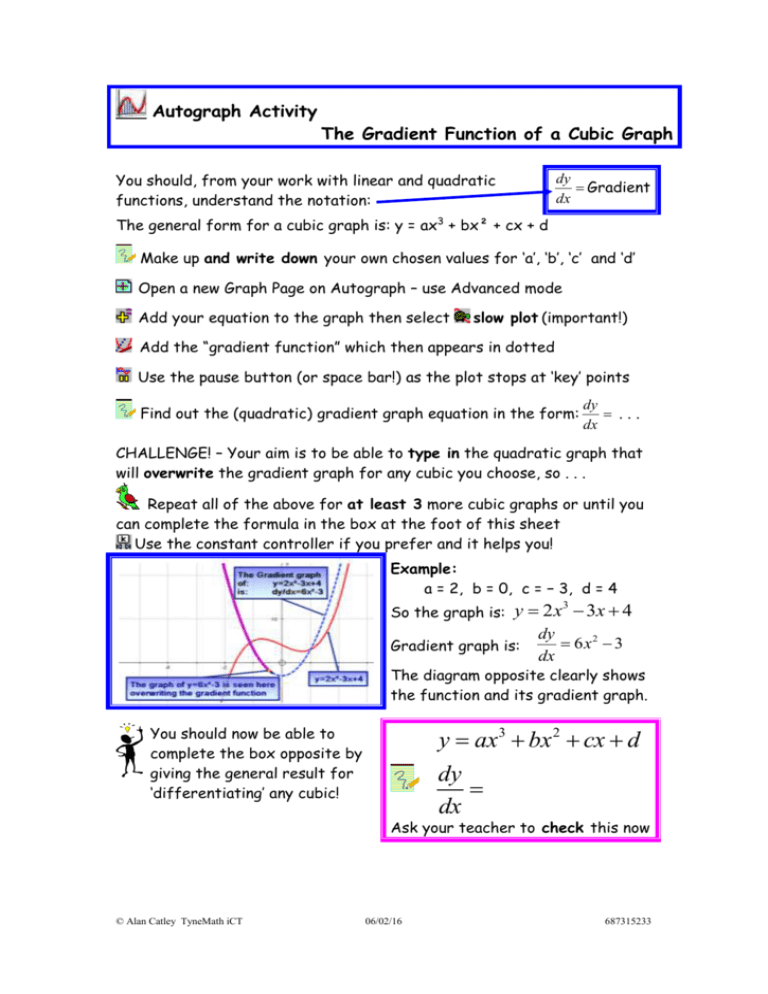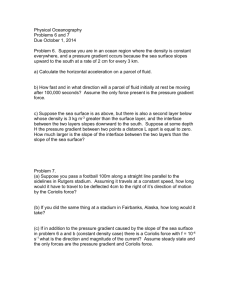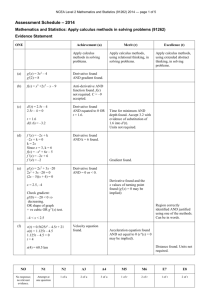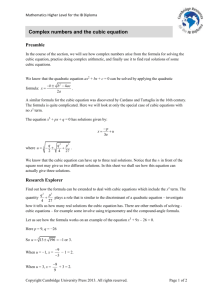Differentiation of a cubic
advertisement

Autograph Activity The Gradient Function of a Cubic Graph You should, from your work with linear and quadratic functions, understand the notation: dy Gradient dx The general form for a cubic graph is: y = ax3 + bx² + cx + d Make up and write down your own chosen values for ‘a’, ‘b’, ‘c’ and ‘d’ Open a new Graph Page on Autograph – use Advanced mode Add your equation to the graph then select slow plot (important!) Add the “gradient function” which then appears in dotted Use the pause button (or space bar!) as the plot stops at ‘key’ points Find out the (quadratic) gradient graph equation in the form: dy ... dx CHALLENGE! – Your aim is to be able to type in the quadratic graph that will overwrite the gradient graph for any cubic you choose, so . . . Repeat all of the above for at least 3 more cubic graphs or until you can complete the formula in the box at the foot of this sheet Use the constant controller if you prefer and it helps you! Example: a = 2, b = 0, c = − 3, d = 4 So the graph is: y 2 x3 3x 4 Gradient graph is: dy 6 x2 3 dx The diagram opposite clearly shows the function and its gradient graph. You should now be able to complete the box opposite by giving the general result for ‘differentiating’ any cubic! y ax3 bx 2 cx d dy dx Ask your teacher to check this now © Alan Catley TyneMath iCT 06/02/16 687315233











